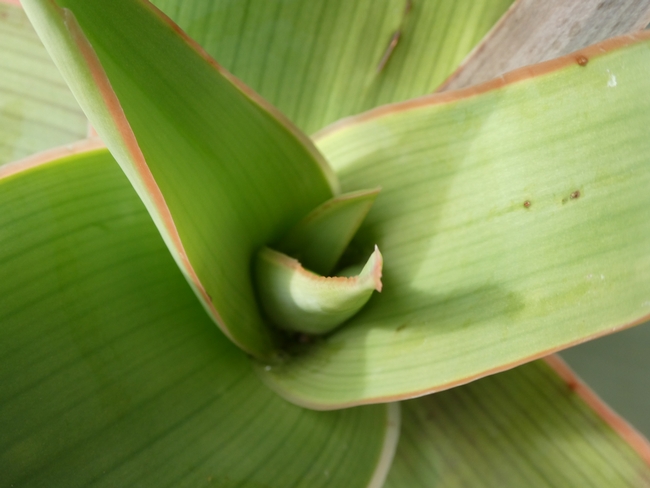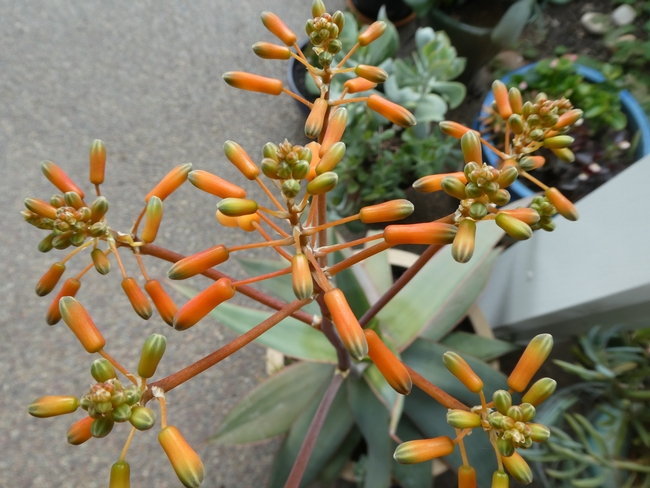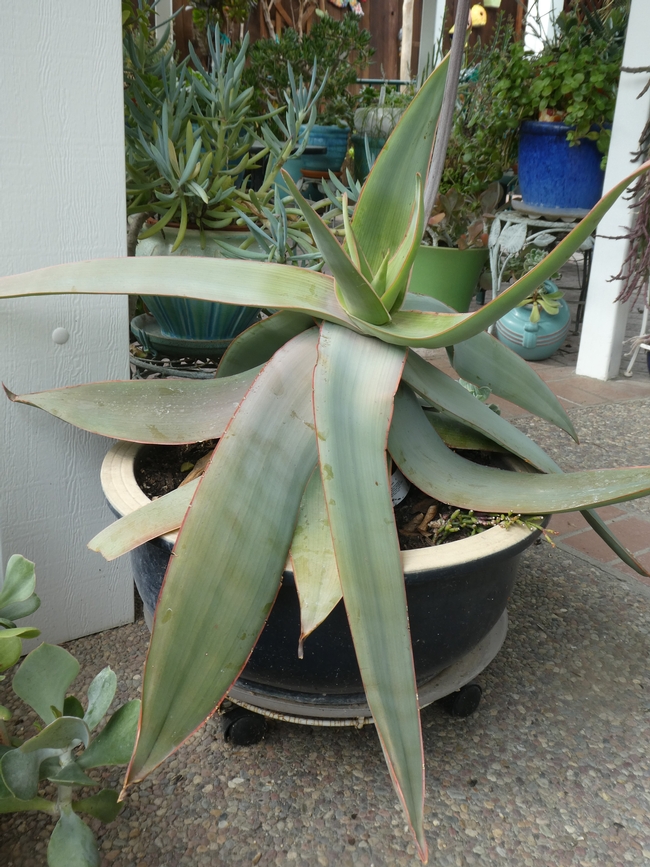Aloe karasbergensis
Perusing plants at a Santa Barbara nursery while on vacation a few years back, I was drawn to an unusual looking aloe. Soft to the touch with dark green lines running vertically down the inside of its smooth fleshy greenish grey leaves, this plant was not just attractive but so adorable being only 2"x2" in size, I had to take it home. (I mean, that's what real gardeners do on vacation, isn't it — shop for plants, then stuff the car full?)
What fun I've had watching this plant slowly grow — and I do mean “slowly.” Finally, this January I noticed a spike emerging from its swirling center of leaves. By the time rusty orange-red tubular shaped flowers emerged in late February, I realized the leaves were not only thicker but longer in length and larger in width. The aloe was also taller. By mid-March, the flower spike by itself topped out at 30" in height.
I'm glad I took a chance on the once-tiny aloe, which I've since learned is one of the two lesser subspecies of Aloe striata. I'm also quite thrilled it survived since I had no knowledge of its habitat until now.
Aloe karasbergensis, named after the Karasberg Mountains in southern Namibia, was discovered by botanist Neville Stuart Pillans who added it to his Rosebank garden in Cape Town in the mid-1920s. While Aloe striata is commonly cultivated as an herbaceous garden plant, the subsp. karasbergensisand subsp. kommagasensis are considered harder to grow.
Research shows that this species can tolerate several seasons without water in addition to conditions with moderate rainfall. Ideally, Aloe karasbergensis prefers a desert to semi-desert environment such as rugged mountainous areas and rocky slopes, along with dry river beds sheltered by boulders and overhangs. This plant propagates through wind-dispersed seeds pollinated by birds and insects.
I've noticed that my plant is quite happy in a large shallow ceramic pot that drains well. During Vacaville's scorching summer days, it looks best in dappled shade from a tree or nearby umbrella. When spring approaches and the days length and temperatures warm, this aloe's leaves exude a tinge of pink.
A word to the wise: Plant in a pot or spot large enough to accommodate its growth over several years. The edges of the plant damage easily.
For an intriguing look at botanist/native plant enthusiast Neville Stuart Pillans (son of an agricultural father who collected succulents and a horticulturalist mother), check out this website:https://plants.jstor.org/stable/10.5555/al.ap.person.bm000006543

Aloe k 1

Aloe k 2

Aloe k 5

Aloe k 6

Aloe k 3




Posted by TEAMVALOR786 Succulents and Cacti on July 13, 2023 at 8:22 PM